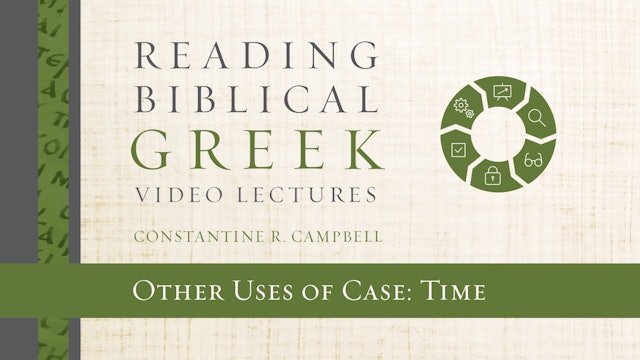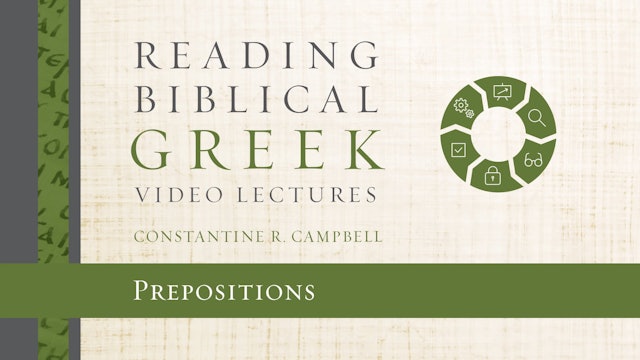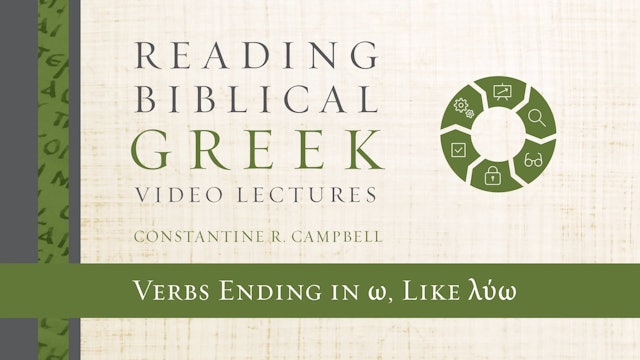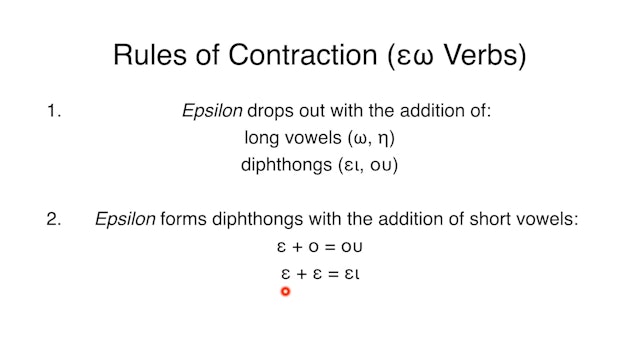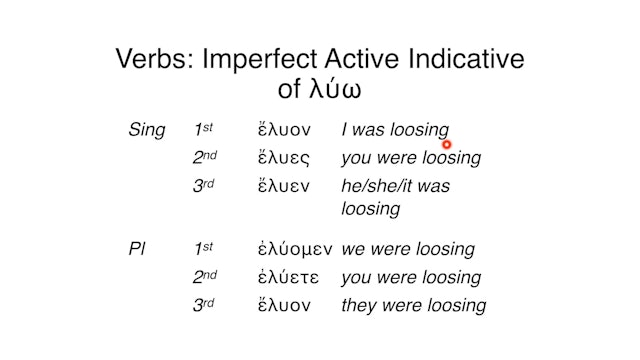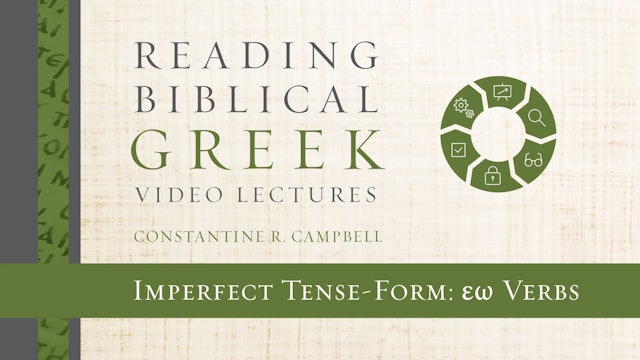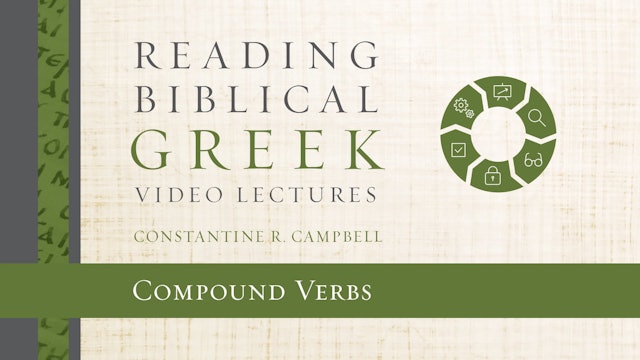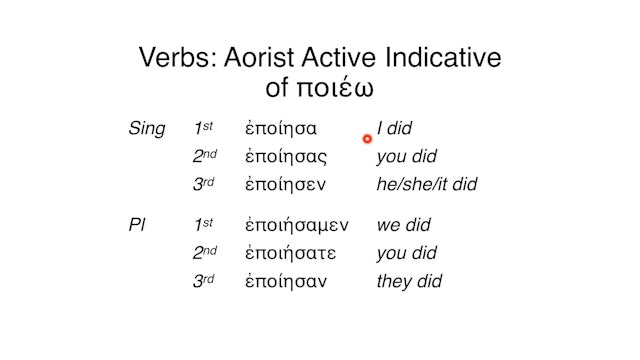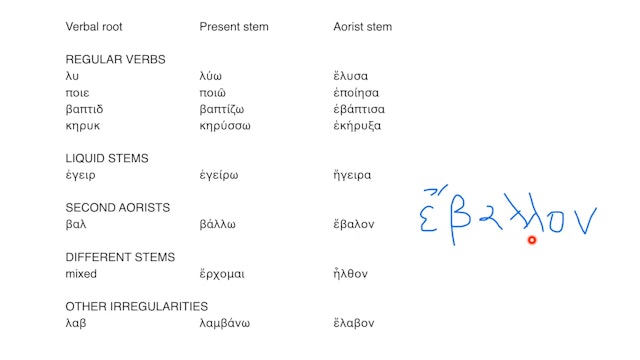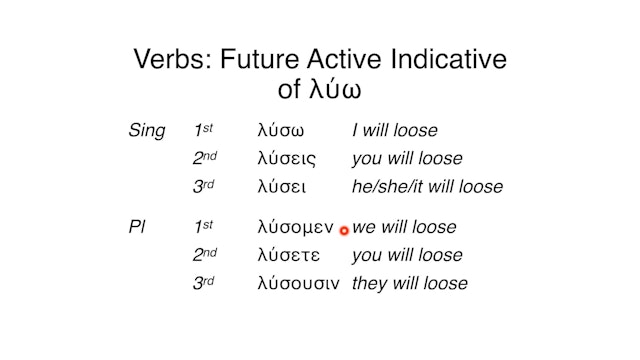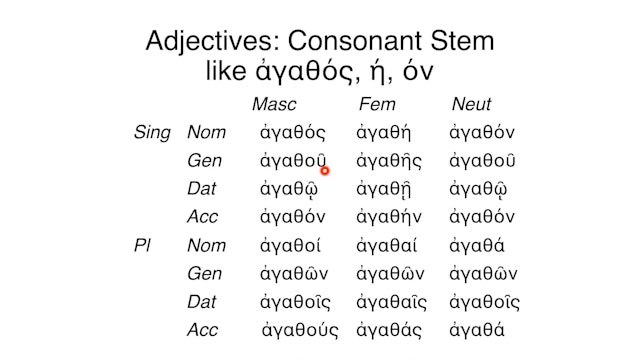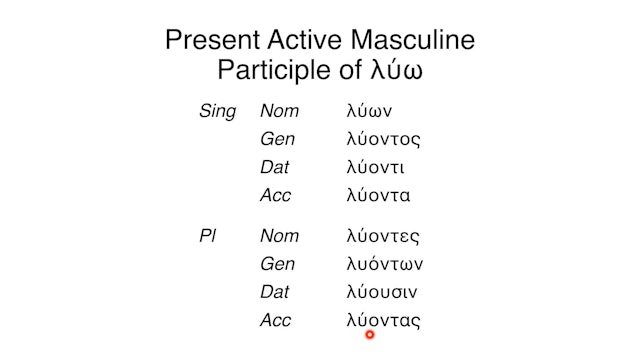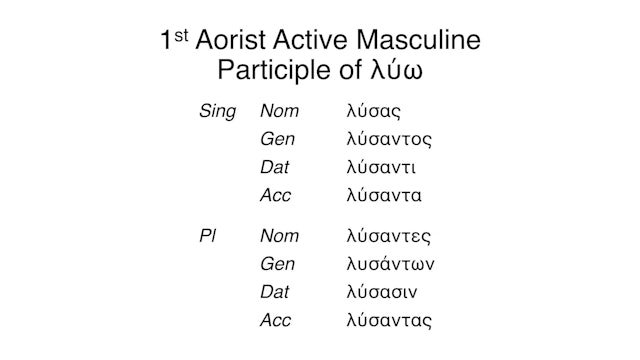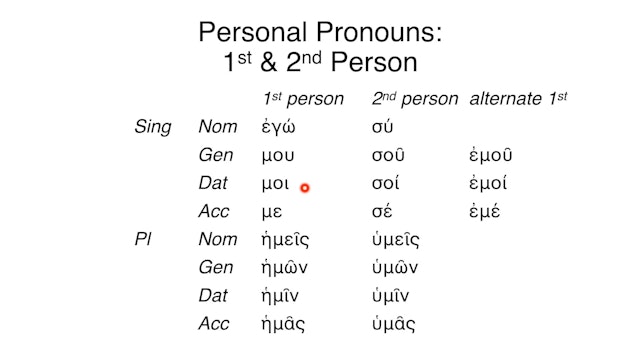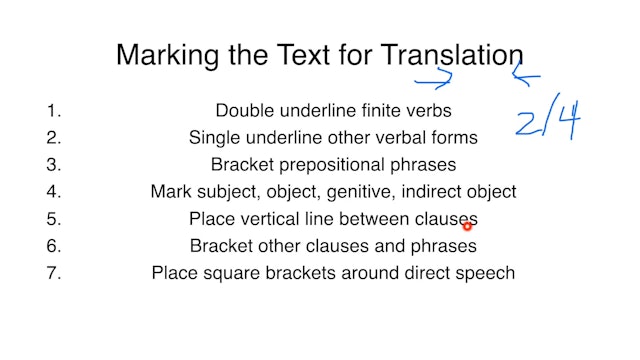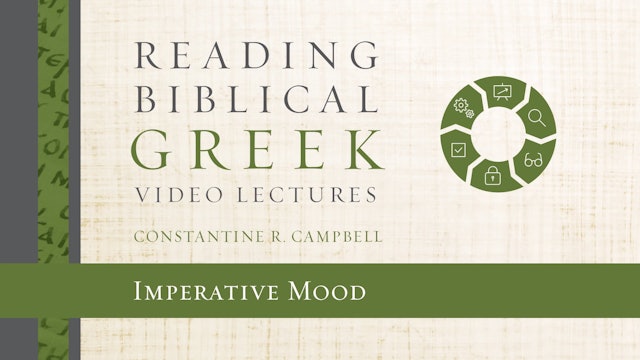Reading Biblical Greek (Constantine R. Campbell)
Based on Reading Biblical Greek written by Richard J. Gibson and Constantine R. Campbell, this series is designed around three core elements: grammar, vocabulary, and reading and translation. It introduces you to the essential information you need to optimize your grasp of the fundamentals of biblical Greek—no more and no less—and help you read and translate the Greek of the New Testament as soon as possible.
The learning approach in the Reading Biblical Greek course revolves around three core elements: grammar, vocabulary, and reading and translation.
• Grammar. The grammar consists of micro-lessons, which break up information in small, digestible chunks. Each micro-lesson addresses a single point. This arrangement makes for easy comprehension and review. New learning is incremental and recursive—each new piece builds on and reinforces prior learning.
• Vocabulary. As an essential complement to grammar, vocabulary is introduced at strategic points and is arranged first by what you have been learning in grammar, and then by frequency.
• Reading and Translation. The goal of this series is to enable students to read and translate the Greek of the New Testament. Thus, the content is structured and tied to a specific Greek text to enable reading as soon as possible. The student will have read and translated the whole of Mark 1–4 by the end of the series.
While Reading Biblical Greek only introduces you to information that is essential to grasp the fundamentals of the Greek language, it is informed by the latest and best of Greek and linguistic scholarship, enabling you to move seamlessly into further study.
By watching this series, you will gain:
• familiarity with the basic rules of New Testament Greek grammar
• a basic grasp of beginning-level Greek vocabulary
• experience in applying grammar and vocabulary lessons to actual translation
-
Reading Biblical Greek - Session 24 - Other Uses of Case: Time
-
Reading Biblical Greek - Session 25 - Prepositions
-
Reading Biblical Greek - Session 26 - An Introduction to Verbs
-
Reading Biblical Greek - Session 27 - Characteristics of the Verb
-
Reading Biblical Greek - Session 28 - Verbs Ending in ω, Like λύω
-
Reading Biblical Greek - Session 29 - Contract Verbs Ending in εω
-
Reading Biblical Greek - Session 30 - Analyzing Verbs
-
Reading Biblical Greek - Session 31 - Verbal Aspect
-
Reading Biblical Greek - Session 32 - Imperfect Tense-Form
-
Reading Biblical Greek - Session 33 - Imperfect Tense-Form: εω Verbs
-
Reading Biblical Greek - Session 34 - Compound Verbs
-
Reading Biblical Greek - Session 35 - εἰμί, The Verb I Am (To Be)
-
Reading Biblical Greek - Session 36 - First Aorist Tense-Form
-
Reading Biblical Greek - Session 37 - Verb Roots and Stems
-
Reading Biblical Greek - Session 38 - Future Tense-Form
-
Reading Biblical Greek - Session 39 - Adjectives
-
Reading Biblical Greek - Session 40A - Participles
-
Reading Biblical Greek - Session 40B - Participles continued
-
Reading Biblical Greek - Session 41 - Personal Pronouns: 1st and 2nd Person
-
Reading Biblical Greek - Session 42A - Marking the Text for Translation
-
Reading Biblical Greek - Session 42B - Translating Greek into English
-
Reading Biblical Greek - Session 43 - Conjunctions
-
Reading Biblical Greek - Session 44 - Charting the Syntax of a Passage
-
Reading Biblical Greek - Session 45 - Imperative Mood



